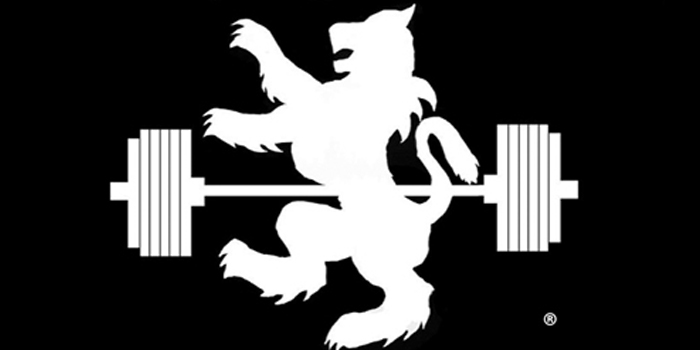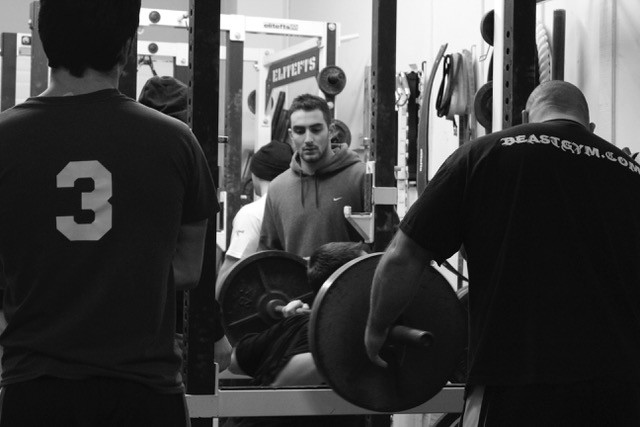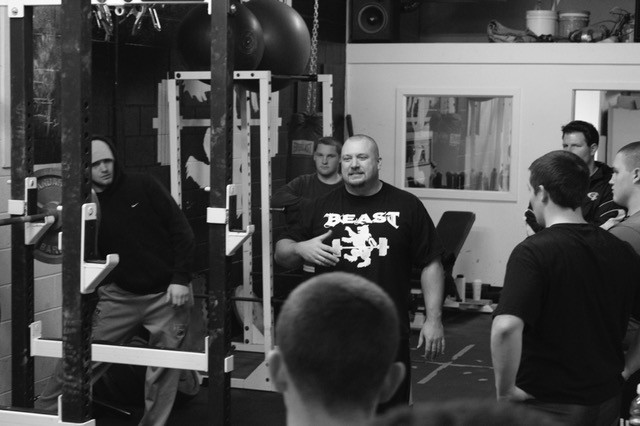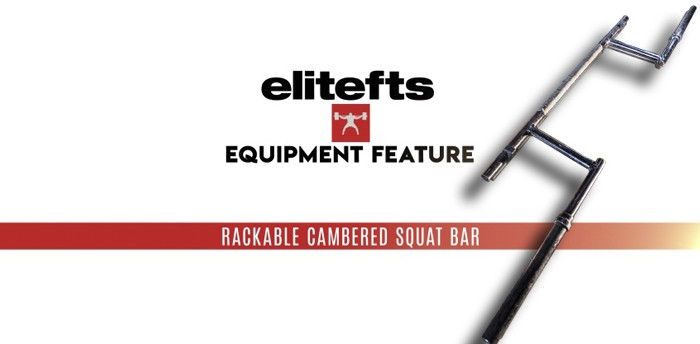
Years ago I was having a conversation with a close friend. We were sitting together at a blackjack table in Las Vegas—in Old Vegas, at Binion’s Gambling Hall and Hotel Casino (formerly Binion’s Horseshoe)—and it was one of those rare occasions where the splitting and hitting goes in your favor. He said, “You are one of the few people I know who tries to put things you have read into practice.” I peered at my fat stack of chips and took it as a compliment.
There is so much information available today in such a variety of formats. In truth, my consumption is generally limited only by my ability to allocate the time and, more recently, to remain conscious. I just can’t stay awake late like I used to. I recently tuned into YouTube to watch Jim Wendler speak at the elitefts Sports Performance Summit. He discussed his experience after assuming the role of strength coach at a failing high school football program. It’s a great watch and a good lesson in keeping youth training simple, working on slow and steady progressions.
I have listened to Dave Tate lecture on strength training on multiple occasions, including live in Ohio at one of the Learn to Train Seminars (LTTS). During the LTTS, Dave suggested there are three reasons strength athletes fail to make progress (hit a sticking point) on a given lift. I remember his points because I dutifully sat in the front row and took notes.
- Technical Reasons: The athlete is not utilizing proper technique
- Physical Reasons: The athlete is not strong enough to complete the lift
- Mental Reasons: A mental block or fear is inhibiting the athlete
Dave suggested that 80% of the time when an athlete or lifter hits a sticking point, it is because of technique. Recently, in my own training, mental reasons have surfaced much more frequently than when I was younger. I just don’t want to suffer serious injury. With younger athletes, I believe both technical and physical reasons are more prevalent. The importance of learning and utilizing proper strength training technique is the chief focus of this brief column.
What programming changes should an athlete make to increase their squat strength? Sometimes the correct answer is they just need to learn how to perform the lift correctly. Most athletes are primarily interested in improving their athletic performance in their specific field of play. Because of their focus on sports performance, they may be less concerned with consistency in strength training, or they may harbor a false belief that having great technique during weight training is relatively unimportant.
Athletes train to become better linebackers, shortstops, attacks, catchers, etc. — not to become better lifters. Because they aren’t training to become powerlifters or weightlifters, they often rationalize the utilization of less than optimal technique. Additionally, especially in the training of young male athletes, a healthy dose of ego can be part of the equation. They want to do anything possible to avoid lowering their training weight, especially when training with their peers. That includes allowing their form to deteriorate to handle additional weight in the near term (effectively sacrificing long-term success and risking acute injury).
RECENT: Fivearms and Sibling Rivalry
Training technique and on-field performance are irrevocably linked. Strong legs are an absolute requirement of all sports. Free weight squats are arguably one of the best builders of leg strength. The performance of a free weight squat, in most instances, requires the placement of a load (the barbell) across an athlete’s upper back and shoulders. Squat performance with optimal technique will yield the desired and appropriate results in the safest manner possible.
Excellent squat technique builds strong legs, resulting in improved performance on the field. As a trainer, in addition to producing strong athletes, I work toward making them as injury-resistant as possible on the field. Injuries during training, especially near maximal effort training, can and do happen. However, the utilization of optimal technique will help to minimize the incidents of trauma (and maximally protect an athlete’s hips, knees, and spine). If you have ever had the opportunity to train with elite strength athletes, you will notice they are absolute sticklers when it comes to training with correct form and technique.
Squat Training and Technique — The Cues
Merely gripping the bar is not part of the equation; choking the hell out of it is. The grip should be deliberate and tight, digging hands into the knurling. I have witnessed lifters with grips so considered that watching them stare down the bar before getting into position was comparable to watching a UFC Fighter prepare for battle. Feet should be set in the appropriate position, slightly wider than shoulder width and glued to the floor. Hands glued to the bar and feet glued to the floor; everything should be held tight and remain tight.
After the athlete sets the bar in place on his or her shoulders, the lifter’s back should be arched tight, and elbows turned tight in a downward position. Both techniques help the squatter to keep their chest up and to squat the bar in more of a straight line. If using a belt, the lifter should push his belly out into his belt after inhaling to fill his or her abdomen with as much air as possible before the descent. Everything should work in synergy to hold the body tight. The lifter should deliberately lift the bar out of the rack or monolift while demonstrating full and tight control. The lifter initiates the squat with hips moving backward.
During the descent and ascent, the athlete should push his or her knees outward, almost as though trying to push the floor apart. Pushing the knees out engages the hip muscles in the squat and helps keep the knees tracking over the toes. During the ascent, the lifter should lead with their head, keeping the chest up and maintaining as tight of an arch in his back as possible.
In Summary
The importance of technique cannot be overstated, and an athlete must frequently and consistently practice good technique to become competent in the training room. Good performance is critical, not only from a maximal strength perspective but also from a safety standpoint. A good strength coach’s practice of honing training technique carries over to the field of play from both strength and discipline perspectives. You play the way you practice.












